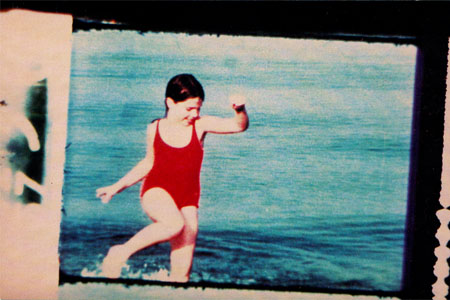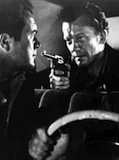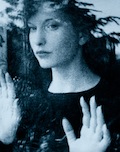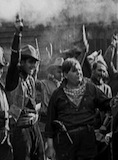As 2012′s celebrations of women’s history month draw to a close, we take a moment to salute the contributions of female auteurs in this third of three installments. Often marginalized in “official” histories of cinema, women have been integral in shaping cinema from practically the moment of its inception, proving themselves in the creative and social vanguard of their times—some only properly recognized in retrospect. From Alice Guy’s development of some of the conventions of narrative cinema to Maya Deren inspiring generations of boundary-pushing experimenters to Agnès Varda helping kick off the French New Wave, female auteurs have shaped larger film movements, styles, and trends.
Claire Denis
Maren Ade
Agnès Varda
Su Friedrich
Kelly Reichardt
Pascale Ferran
Chantal Akerman
Lynn Hershman Leeson
Adrienne Shelly
Julie Dash
Marjorie Keller
Dana Plays
Ida Lupino
Maya Deren
Ruth Ann Baldwin
Alice Guy
This list (in its full form, right) is not intended to be definitive in any way, and just as is the case with any list, the worthy-but-excluded far outnumber the comparatively tiny number of inclusions. A shortage of female filmmakers of color and/or of non-Western origin may indicate that if female filmmaking practice is often marginalized in general, those making films outside of America and Europe face even more hurdles in getting their films made, seen, available, and appreciated. Please feel free to submit your own overlooked favorites in the comments section: Germaine Dulac, Leni Riefenstahl, Lina Wertmüller, Barbara Hammer, Jane Campion, Mira Nair, Sofia Coppola? The list is potentially endless.
This particular collection is intended to be generative in nature, to inspire further exploration and study. Below is the third installment, featuring the films and the work of filmmakers available to view here at Fandor and arranged in reverse chronological order according to the featured film’s release date.
11. Marjorie Keller (1950–1994)
Not only was Marjorie Keller a highly regarded experimental filmmaker, she earned a doctorate in Cinema Studies and established herself as a scholar and a professor of film production. A book-length study of fellow female filmmakers Abigail Child, Leslie Thornton, and Su Friedrich was sadly left uncompleted at the time of her death at the age of 44. Of the nearly 25 films that she made, Daughters of Chaos (1980) is generally considered her most well known and widely seen. Combining the casualness of home video footage with Keller’s characteristically rigorous filmmaking practice, the film evokes the dreams and fantasies of girlhood by juxtaposing wedding footage, the natural world, and images of girls performing. But as hinted by the title, things might not be as idyllic as they first appear.
12. Dana Plays
The 31 films to date made by experimental filmmaker and digital artist Dana Plays often utilize found footage that Plays then intercuts with her own material, creating documentaries that explore a wide variety of topics and subject matter. Often intensely personal in nature, one of these films is the multi-award winning Love Stories My Grandmother Tells (1994), a portrait of Plays’ 90-year-old grandmother that explores the relationship between the past and present, the public and private, and the nature of family through a variety of innovative cinematic devices and techniques. As well as continuing to create films, visual art and installations, Plays is currently working on a feature-length film about the great aunt of hers who provided a haven for 300 Jewish children in France during WWII. She has taught at several institutions, and has served as a professor of film and women’s studies at Tampa University since 1990.
13. Ida Lupino (1918–1995)
Starting her career as an actress, Ida Lupino initially achieved fame for the two intense, hard-boiled performances she gave opposite Humphrey Bogart in They Drive By Night (1940) and High Sierra (1941). Later she would say that she often felt bored on set while “someone else seemed to be doing all the interesting work,” and so after leaving Warner Bros. she formed a production company with her husband. She subsequently embarked on a career as a producer, writer, and director, making her, along with Dorothy Arzner, one of the only women to direct films in Hollywood during the studio system era. The seven films she directed are known for dealing with Production Code taboo topics such as rape. Her two most famous films are The Bigamist and The Hitch-Hiker (1953), with the latter generally considered the first (and perhaps only) classic film noir directed by a woman. Throughout the 1950s, 60s, and 70s, Lupino continued to act and direct for television, and she lived long enough to see her films rediscovered and hailed by feminists critics and writers in the 1960s and 70s.
14. Maya Deren (1917–1961)
Often referred to as “mother of the avant-garde,” Maya Deren created a small body of work—just eight short films and several unfinished projects—that has nonetheless proved to be a touchstone in independent filmmaking and remains as influential as it was during her own lifetime. Her first finished film, Meshes of the Afternoon (1943), was co-directed by her then-husand Alexander Hammid and remains her most famous work. An eerie, evocative story that follows a dream-like logic, it stars Deren herself, and the image of her gazing out the window (seen at left) has become iconic. As well as a filmmaker and a tireless proponent of experimental filmmaking, Deren was a film theoretician and wrote extensively on the nature of film. In the 1950s she became interested in Haiti and traditional voodoo culture and was working on an ethnographic film project when she died suddenly of a brian hemorrhage at the age of 44. Her extensive footage was later fashioned into the 50-minute film Divine Horsemen: The Living Gods of Haiti, and it stands as the remarkable last testament to a filmmaking pioneer.
Also of interest is Martina Kudlacek‘s impressionistic documentary on Deren, In the Mirror of Maya Deren (2003).
15. Ruth Ann Baldwin (1886–)
Baldwin began her career as a screenwriter for Universal Studios in 1915, and a year later was given the opportunity to direct her first film, a one-reel drama. In 1917 she was promoted again and was among several women who directed films for Universal (the majority of their films, unfortunately, are now considered lost). Baldwin directed two feature films, A Wife on Trial and ’49 – ’17, the latter a witty film that takes place during the 1849 California Gold Rush and is the earliest known Western directed by a woman. For a thoughtful and more thorough analysis of the film, check out Cullen Gallagher‘s excellent article here at Keyframe. Despite the fact that reviews specifically singled out the skill in the film’s direction, after completing ’49-’17 Baldwin returned to screenwriting and her last known writing credit is a film released in 1921. Nothing is known about Baldwin’s career or life is known after that point, something which makes her sole surviving film all the more extraordinary when seen today.
16. Alice Guy (1873–1968)
Also known by her married name Alice Guy-Blaché, Guy was hired by Léon Gaumont as a secretary for his still-photography company, and when he embarked on filmmaking by forming the Gaumont Film Company, he took Guy with him. It led to a remarkable career that spanned over 25 years, during which Guy was involved in the production of some 700 films, either as a producer, writer, or, most famously, as a director. She even served as the studio’s head of production between the years 1896 and 1906, and is now credited with developing narrative filmmaking. During that period, she directed The Consequences of Feminism (1960), which to modern eyes is an ideologically ambiguous take on turn-of-the-century feminist ideals, a topic which Guy wittily and mercilessly satirizes. After leaving Gaumont she emigrated to America and was a dominant force in the developing American film industry, then based in New York City. She retired from filmmaking in 1922 but wrote novels and lectured and wrote extensively on film, causing the French government to award her the Legion of Honor in 1953.
Go to previous installments: Women Auteurs II and Women Auteurs I.
Jesse Ataide writes for Keyframe and his blog Memories of the Future.










